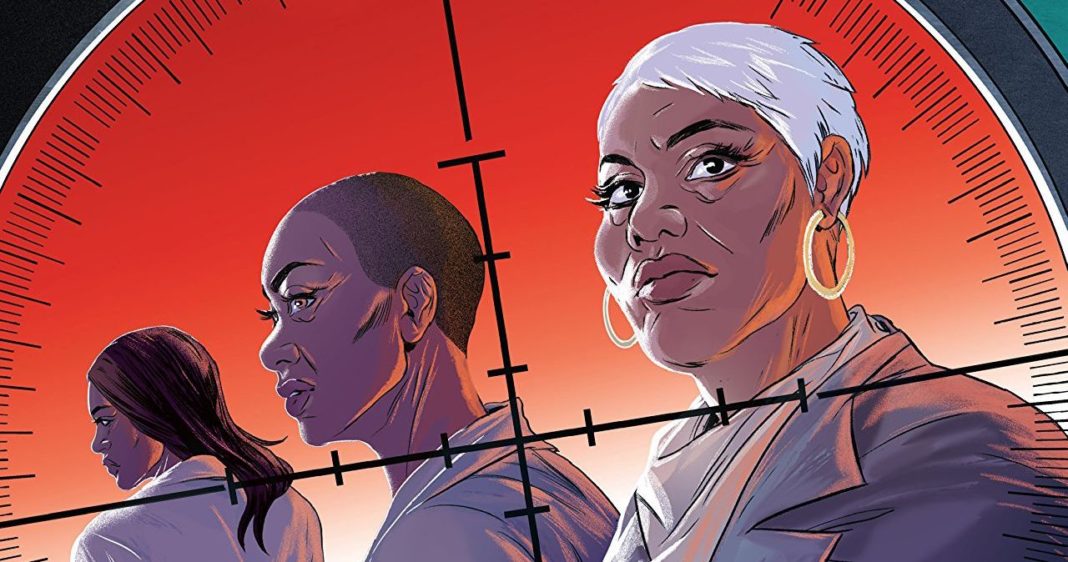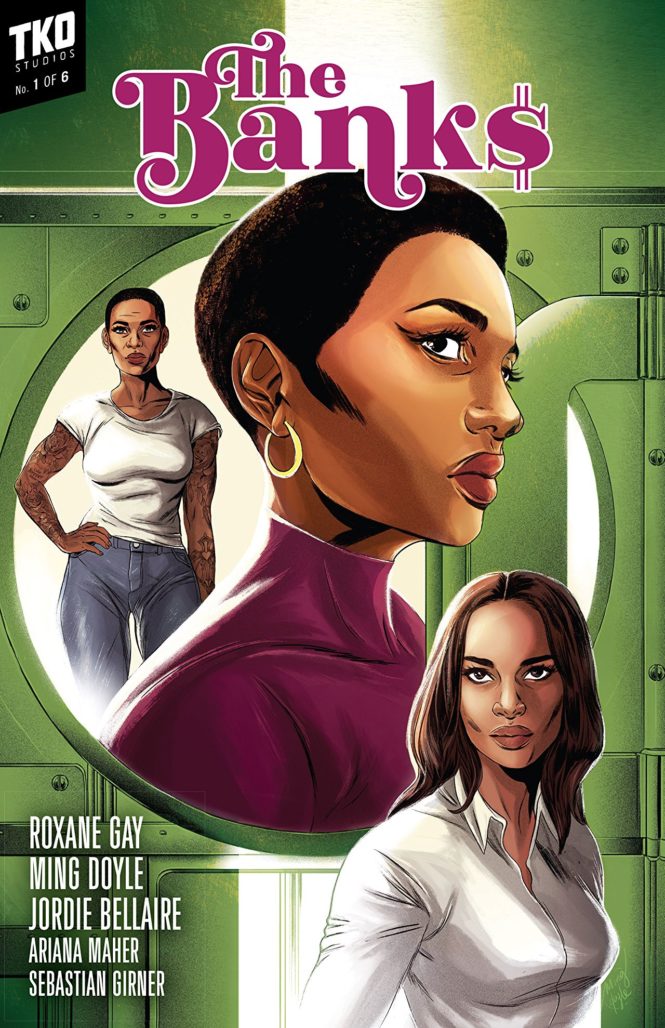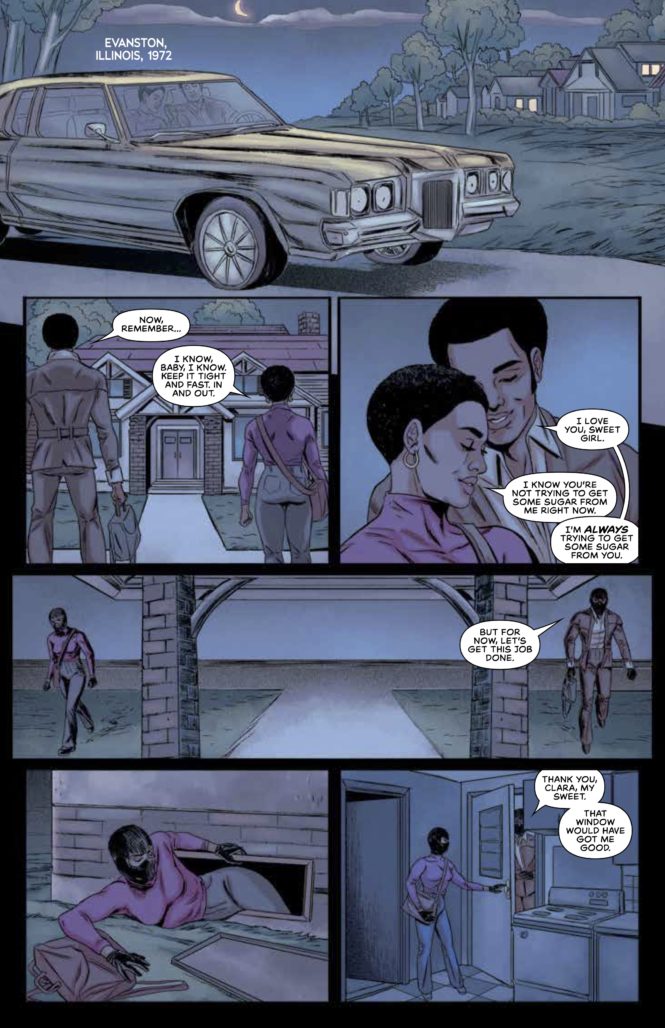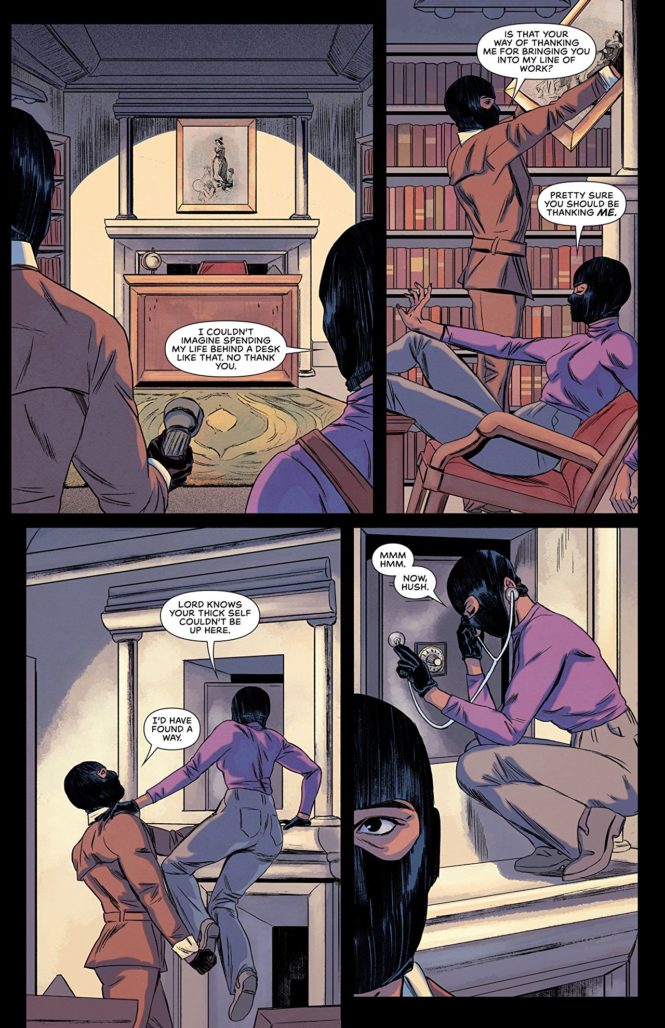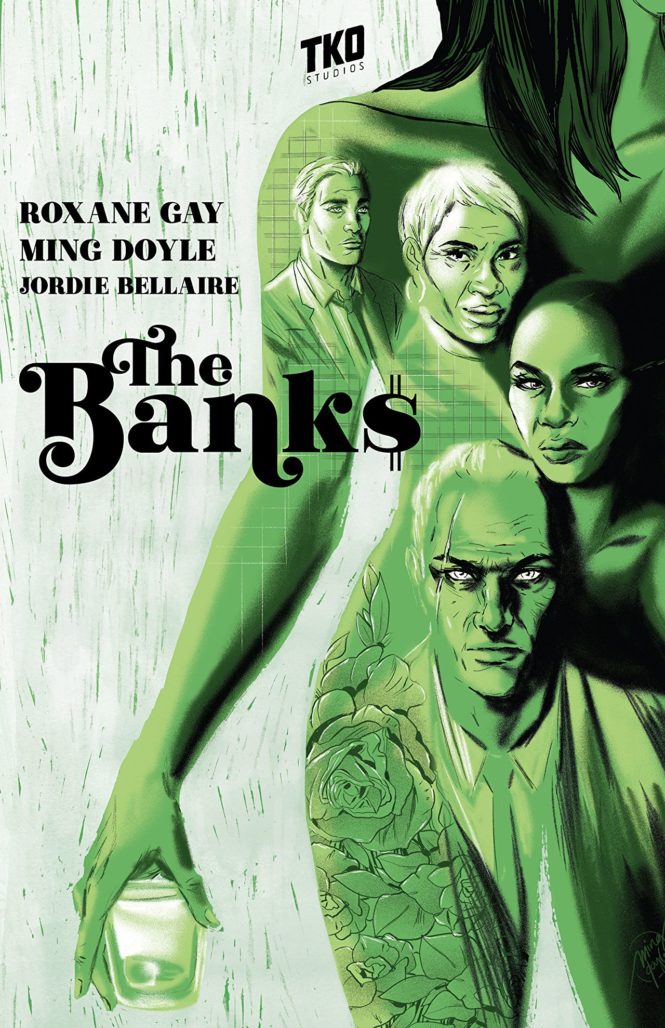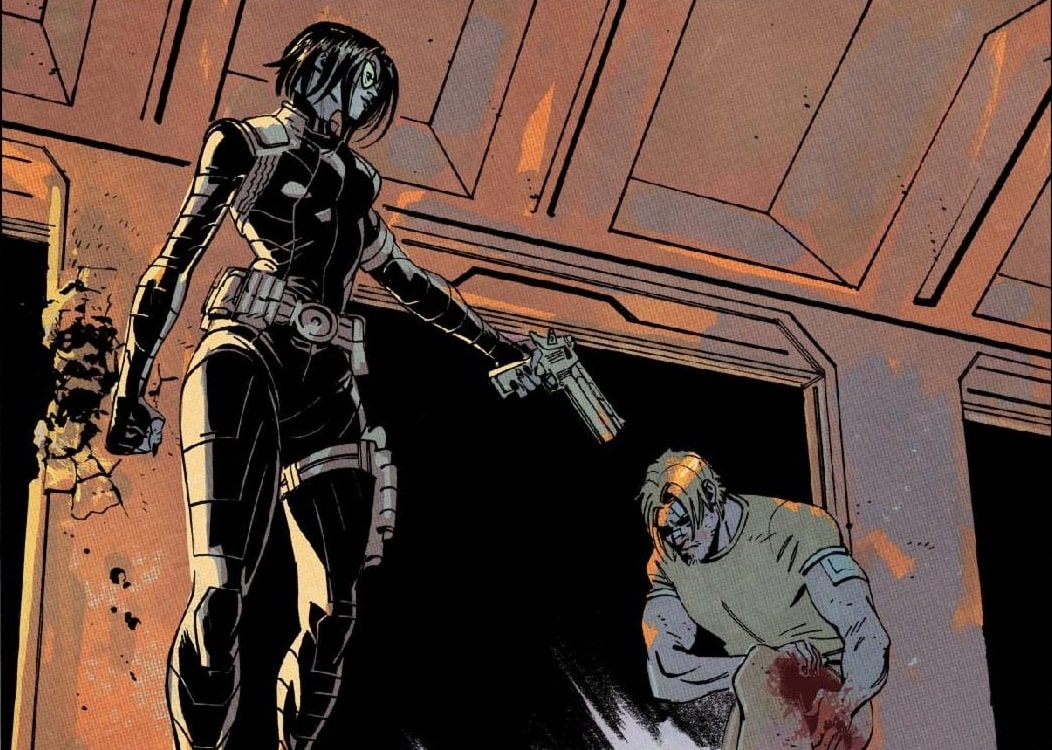The Banks is one of TKO Studios‘ highest-profile series from its second wave of releases, and that’s largely due to the creative team. Roxane Gay is a New York Times best-selling author, Ming Doyle is one of the industry’s most talented artists, and Jordie Bellaire is arguably the most talented colorist in comics. Together they crafted a captivating story about three generations of Black women planning the heist of a lifetime.
The concept for The Banks is immediately intriguing: Celia, an investment banker, gets back in touch with her mother and grandmother, both career burglars, to steal millions of dollars from her firm’s richest client, who happens to be protected by the man who killed her grandfather. It’s interesting that Celia turned her back on her family because of its criminal past but ultimately chooses a profession that causes more harm to the public than any crook ever could. Her job choice and excitement to plan a heist suggests that Celia is more like her mother Cor and grandmother Clara than she’s willing to admit.
The story goes back 40 years to show Clara meeting Melvin Banks, the man who would become her husband. Melvin lures her into a life of crime and when caught redhanded, leaves her alone to raise their child. But that didn’t dissuade Clara from becoming a burglar herself, though, or even of raising her daughter to join the family business. Between The Banks and The Kitchen (now a major motion picture), Ming Doyle has carved out an interesting niche for herself as an artist of 70s crime stories. She excellently captures the 70s aesthetics and clothing from the time period, so it’s a niche that serves her well.
What makes the series so special is how it presents each of the three women’s experiences. Each is radically different because of when they were born and how they were treated as Black women. That’s why, despite their similarities, Celia and Clara mix like oil and water. They hold conflicting perspectives of the world because they grew up in very different environments. The dynamic between the two is the most fascinating element of the story and the number one reason I read through The Banks in a single sitting. The scenes where they share a room are in many ways more exciting than the heist itself, thanks to Gay’s sharp dialogue and the subtle emotions Doyle captures on the page.
Unfortunately, Cor feels somewhat left out. She receives her own flashback, which shows the beginning of her relationship with Addie, Celia’s other mother. But in the present, she mostly serves as the mediator between her mother and her daughter. I would have liked to see her more developed and learn why she followed her mother’s path to become a career criminal and how she feels about being caught in the middle.
Like any good heist story, the action ramps up towards the end with satisfying confrontations and clever means of outsmarting their enemies. The ending was unexpected and perhaps a bit contrived, but I think it will leave most readers smiling at the end of their journeys with the Banks family. Unlike most heist stories, the plot isn’t the central element, the characters are. The comic will ultimately be remembered for its three leading ladies, the lessons they learned, and what readers themselves can take away from the series.


